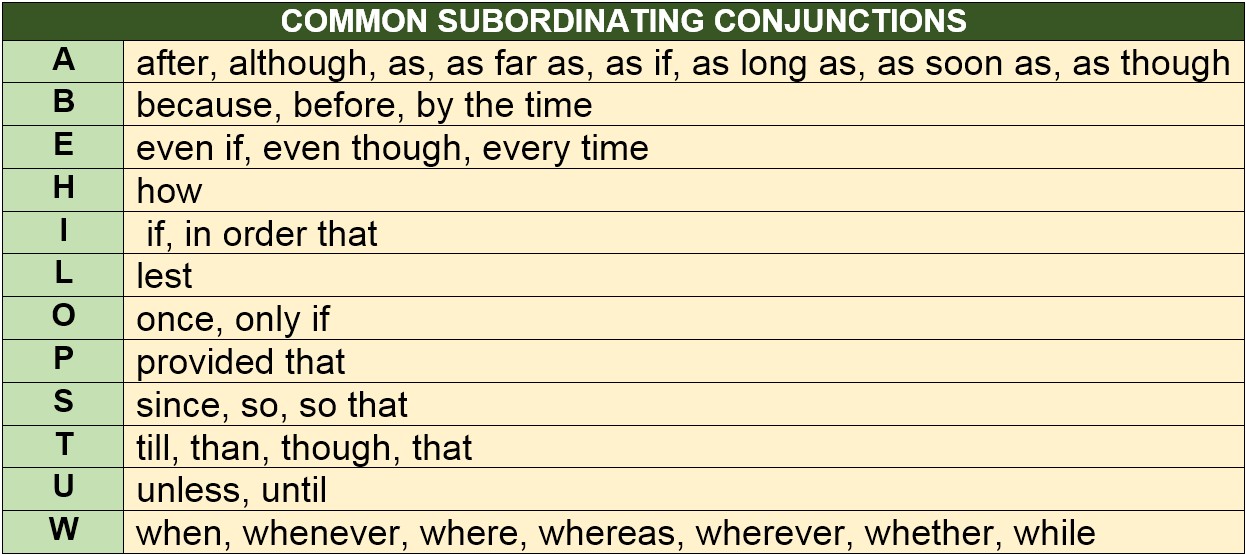Download
Basic English Grammar Book for Students PDF File
CONJUNCTIONS
Definition: A conjunction (abbreviated conj or cnj) is a part of speech that connects words, sentences, phrases, or clauses. Conjunctions link (connect, conjoin) parts of a sentence. The most common conjunctions are and, or, and but.
EXAMPLE:
My boots look great but are not very comfortable.
Are there four or five people living in that apartment?
They gamble, and they drink.
My name is Johnnie, and I am five years old.
Types of Conjunctions
There are three basic types of conjunctions:
- coordinating conjunctions
used to connect two independent clauses
- subordinating conjunctions
used to establish the relationship between the dependent clause and the rest of the sentence
- correlative conjunctions
used to join various sentence elements which are grammatically equal
Conjunctions may be placed at the beginning of sentences
COORDINATING CONJUNCTIONS
The coordinating conjunctions are conjunctions that join two independent clauses, or two nouns, or two verbs, etc. They are: for, and, nor, but, or, yet, so.
Use the mnemonic “FANBOYS” to memorize coordinating conjunctions:
- F = for
- A = and
- N = nor
- B = but
- O = or
- Y = yet
- S = so
When using coordinating conjunctions make sure you follow these instructions:
- Ensure that the coordinating conjunction is immediately followed by a main clause
- Don’t use coordinating conjunctions to begin all of your sentences. Do so only when it makes your writing more effective.
- Use a comma before the coordinating conjunctions which separate two independent clauses (unless both clauses are very short).
- Although commas typically follow coordinating conjunctions, they should not be used after coordinating conjunctions used to open sentences unless an interrupter immediately follows.
EXAMPLE:
Do you like tea or coffee?
I like tea and coffee.
I want to work as an interpreter in the future, so I am studying English.
We didn’t have much money, but we were happy.
I am allergic to dogs, yet I have three of them.
I go to the park every Sunday, for I love to watch the swans on the lake.
They do not gamble, nor do they drink.
SUBORDINATING CONJUNCTIONS
A subordinating conjunction (also called a dependent word or subordinator) comes at the beginning of a subordinate (or dependent) clause and establishes the relationship between the dependent clause and the independent clause. Thus, a subordinating conjunction joins a subordinate (dependent) clause to a main (independent) clause. Here are some common subordinating conjunctions:
after, although, as, because, before, how, if, once, since, than, that, though, till, until, when, where, whether, while.
EXAMPLE:
Because I was hungry, I ate the apple.
She goes to the tennis club because she likes to play tennis.
When the doorbell rang, my dog Skippy barked.
As you couldn’t see the film, we’ll tell you all about it.
Although it was raining, Jason went swimming.
Unless we act now, all is lost.
He took to the stage as though he had been preparing for this moment all his life.
Some people make headlines while others make history.
Until spring arrives, we have to be prepared for more snow.
As soon as the alarm goes off, I jump out of bed.
There is only one rule to remember about using subordinate conjunctions:
A subordinate conjunction performs two functions within a sentence:
- it illustrates the importance of the independent clause.
- it provides a transition between two ideas in the same sentence. The transition always indicates a place, time, orcause and effect
USE COMMA after a dependent clause if the dependent clause comes at the beginning of the sentence: As soon as the alarm goes off, I jump out of bed.
CORRELATIVE CONJUNCTIONS
Correlative conjunctions work in pairs to join words and groups of words of equal weight in a sentence. Correlative conjunctions are pairs of conjunctions that work together, or correlate, to join phrases or words that carry equal importance within a sentence.
When joining singular and plural subjects, the subject closest to the verb determines whether the verb is singular or plural.
There are many different pairs of correlative conjunctions:
- either…or
- not only…but (also)
- neither…nor
- both…and
- whether…or
- just as…so
- the…the
- as…as
- as much…as
- no sooner…than
- rather…than
EXAMPLE:
Not only am I finished studying for the exam, but I’m also finished with my paper.
I’ll have both the cheesecake and the vanilla ice cream.
You either do your work or prepare for a trip to the office.
No sooner had I put my umbrella away, than it started raining.
Just as many Americans love basketball, so many Europeans love soccer.
Neither the basketball team nor the football team is doing well.
Would you rather go shopping or spend the day at the beach?
When using correlative conjunctions, you should pay attention to the following:
- When using correlative conjunctions, ensure verbs agree so your sentences make sense. This means that the verbs should agree in number (plural, singular), and tense (present simple, past simple, present perfect, past perfect, …)
- When you use a correlative conjunction, you must be sure that pronouns agree. For example: Neither Debranor Jane expressed her annoyance when the cat broke the expensive lamp.
- When using correlative conjunctions, be sure to keep parallel structure intact. Equal grammatical units need to be incorporated into the entire sentence. This means that the correlation is between a noun phrase and a noun phrase, or between a prepositional phrase and a prepositional phrase, or between a clause and a clause … For example: Not only did Jane grill burgers for John, but she also fixed a steak for her neighbor.


